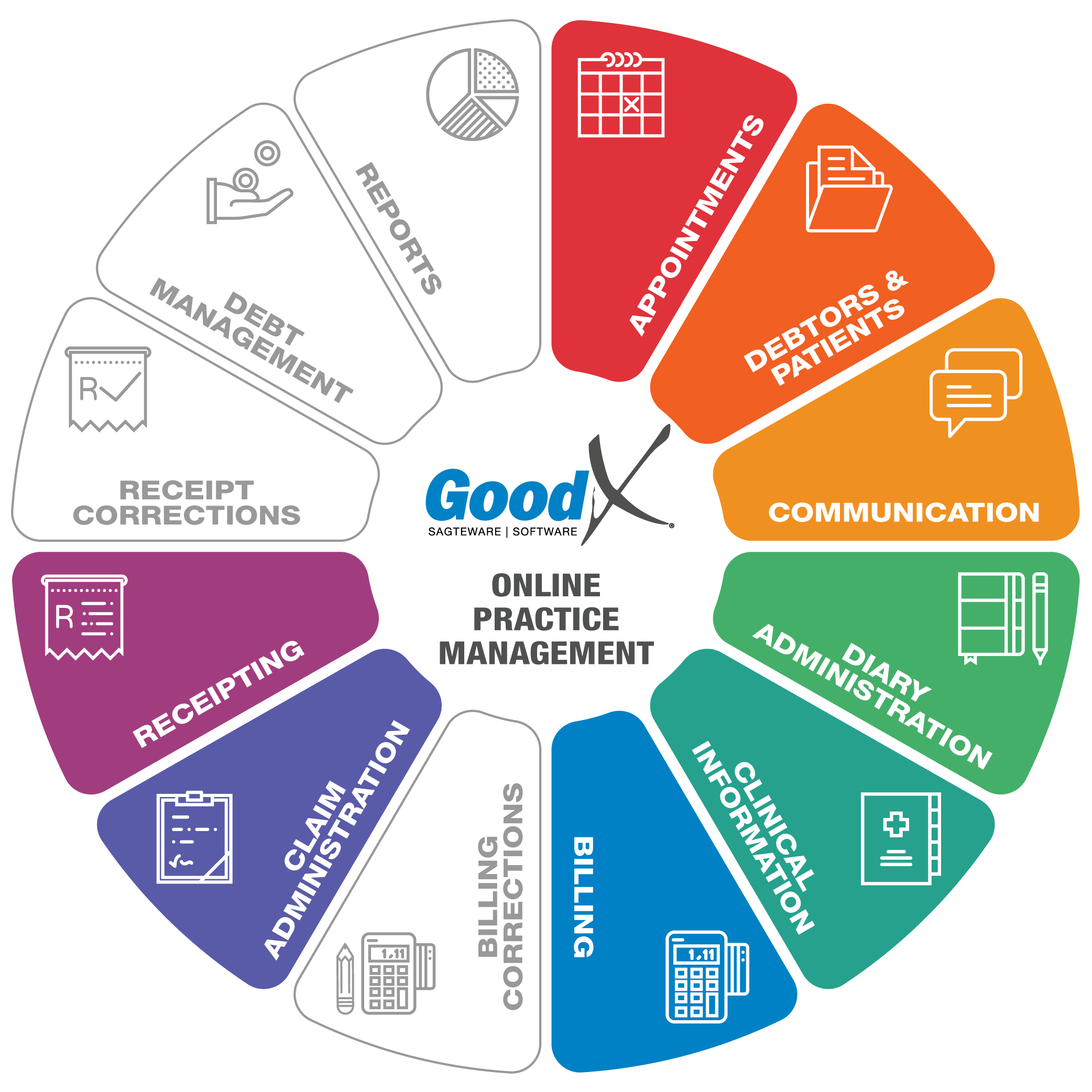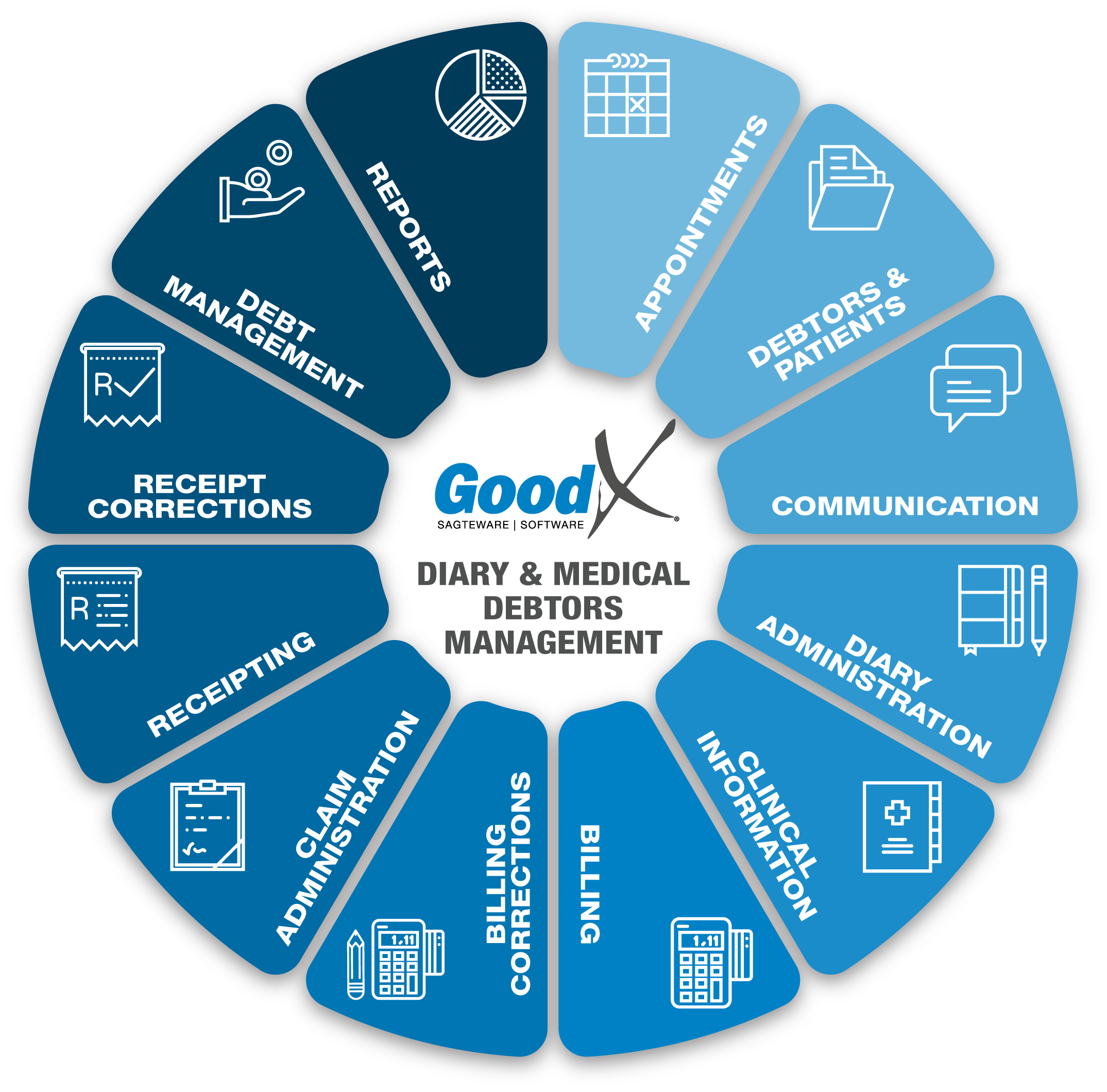Best Practice Guidelines: Telehealth Practice Management

Copyright © 2020 GoodX Software. All rights reserved.
GoodX online Learning Centre
learning.goodx.co.za
2. Telehealth Critical Business Processes
Telehealth practice management operates within the larger practice management framework. In this chapter, we will discuss the practice management framework, the critical business processes pertaining to Telehealth, and the three phases that Telehealth can be divided into as well as how to use the Telehealth practice management flowchart to navigate through this book's content.
The practice management framework and critical business processes
 Any healthcare practice is a business and thus needs to be run effectively and efficiently in order to provide:
Any healthcare practice is a business and thus needs to be run effectively and efficiently in order to provide:- top healthcare to patients; and
- be financially beneficial to owners, practitioners who work on commission and personnel who earn salaries.
Due to the uniqueness of each practice in terms of their services, patients, and so forth, each practice needs to decide what critical business processes their practice management framework should consist of to ensure effective and efficient practice management. There are however some general best practice guidelines that we offer in this book for you to consider to help you set up or optimise your practice management framework.
Practice management generally starts when a patient makes an appointment to see a Practitioner and it ends when all reports show that all work was correctly completed and all income and expenses dealt with. The critical business processes described in this book are the most basic processes that employees must follow and the tasks associated with those processes to be completed so as to ensure efficient and effective Telehealth. Effective in doing the right things to enable it to reach its healthcare and business goals and efficient in that the tasks need to be done right to avoid mistakes and waste of precious time.
This diagram visually illustrates our proposed basic critical business processes in a general practice management framework, so each segment illustrates one process. Within each of the processes, there are tasks that need to be completed.
The following example provides insight into the tasks associated with the processes:
Within Appointments (the process), the following tasks will be performed:
- Document all appointments in the diary so that each entry represents a new appointment;
- Check that correct appointment details are captured for ease of reference for the Practitioner;
- Confirm all telehealth bookings so that no-shows are reduced and patients understand how the Telehealth process works.
Telehealth Critical Business Processes
Telehealth only finds application within the selected coloured segments. However, the diagram still makes the rest of the general practice management processes visible so that it will be easy to implement Telehealth within the larger practice management framework.

This Best Practice guidelines book aims at guiding you through our suggested critical business processes specifically for Telehealth. We have created this diagram on the right so that:
- you can see where Telehealth fits into the larger general practice management framework, and
- you can focus on those processes pertaining to Telehealth.
How to implement Telehealth critical business processes?
Within each of the segments of the diagram, eg Appointments, there are tasks to be performed to complete the Telehealth process. This book describes these basic tasks, what needs to be done, why they are necessary and who is involved in the processes. It is the responsibility of the practice manager to make sure that every role that is involved in the Telehealth process knows which tasks need to be completed and when.
The Telehealth practice management flowchart (see chapter 4) will visually aid the practice manager to implement the processes in the proposed order. The processes are divided into three phases, namely:
- the pre-consultation phase
- the consultation phase
- the post-consultation phase.
Who needs to become acquainted with this information?
These guidelines are provided to:
- the owner of the healthcare practice who needs to design procedures or authorise the practice manager to design procedures for his or her practice; and
- the practice manager (or the person who fulfils the role of the practice manager) who needs to implement these critical business processes and to check that the tasks are completed and reports are generated and analysed; and
- all role players in the Telehealth process whose tasks are properly designed and communicated to them for completion.